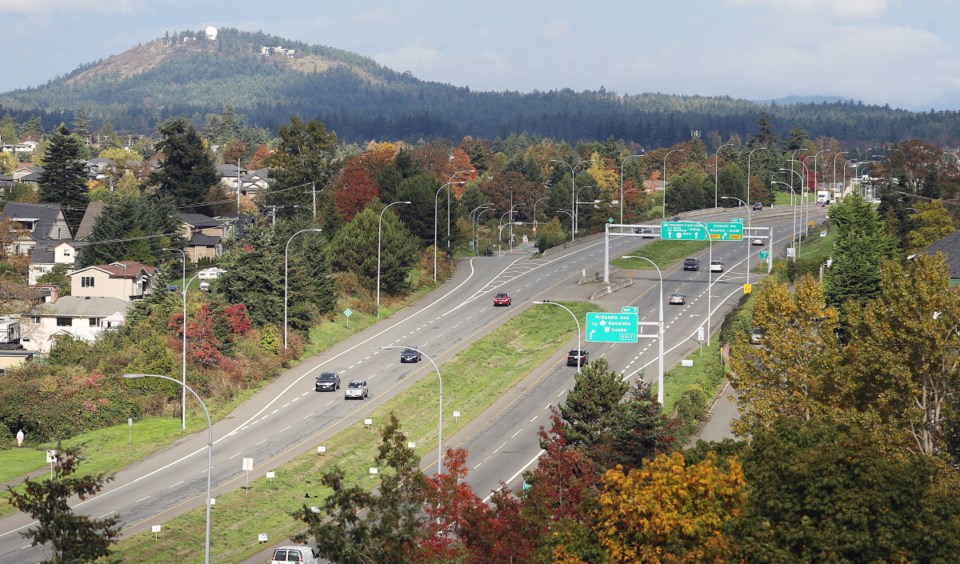B.C. police agencies expect to have an easier time cracking down on left-lane road hogs under new rules that took effect Friday.
Staff Sgt. James Anderson, officer in charge of the capital region’s Integrated Road Safety Unit, said changes to the Motor Vehicle Act will give officers more tools to ticket drivers for failing to stay in the right lane when required to do so.
Police say slow drivers who block the passing lane can increase the risk caused by aggressive drivers who then get frustrated and pass on the right or tailgate.
“I’m sure that the current new law that comes into place today is going to be more specific and easier to enforce,” Anderson told a media conference in Langford.
Under the new rules, drivers on multi-lane highways, where the speed is more than 80 kilometres an hour, must stay right except in certain circumstances, such as when they are:
• passing another vehicle
• allowing traffic to merge from the right
• preparing to make a left-hand turn
• making room for official vehicles with flashing lights
Drivers who fail to stay right could face a $167 fine — up from $109 — and three penalty points.
“This fine and penalty-point combination represents one of the toughest penalties for this particular violation in the entire country,” Transportation Minister Todd Stone said.
He said the previous wording in the Motor Vehicle Act was too open to interpretation, making it difficult for police to enforce the law.
“This all about safety,” he said. “It’s up to drivers to be aware of their surroundings and it’s up to drivers to be aware of the rules of the road.
“By keeping slower traffic to the right, passing vehicles can move along more efficiently.”
Stone said the new rules do not apply in bumper-to-bumper traffic when speeds drop below 50 kilometres an hour. “We recognize that when a highway is congested, it makes sense to use all lanes to keep the traffic flowing.”
Similarly, Stone said drivers should use “common sense” and move left if there is debris or wildlife in the right lane. Nor is driving in the left lane an issue if it’s the middle of the night and there’s nobody else on the road, he said.
“We’ve included all of these situations in this new rule,” Stone said. “I’m confident that drivers will do their part to keep traffic flowing without any mishaps.”



